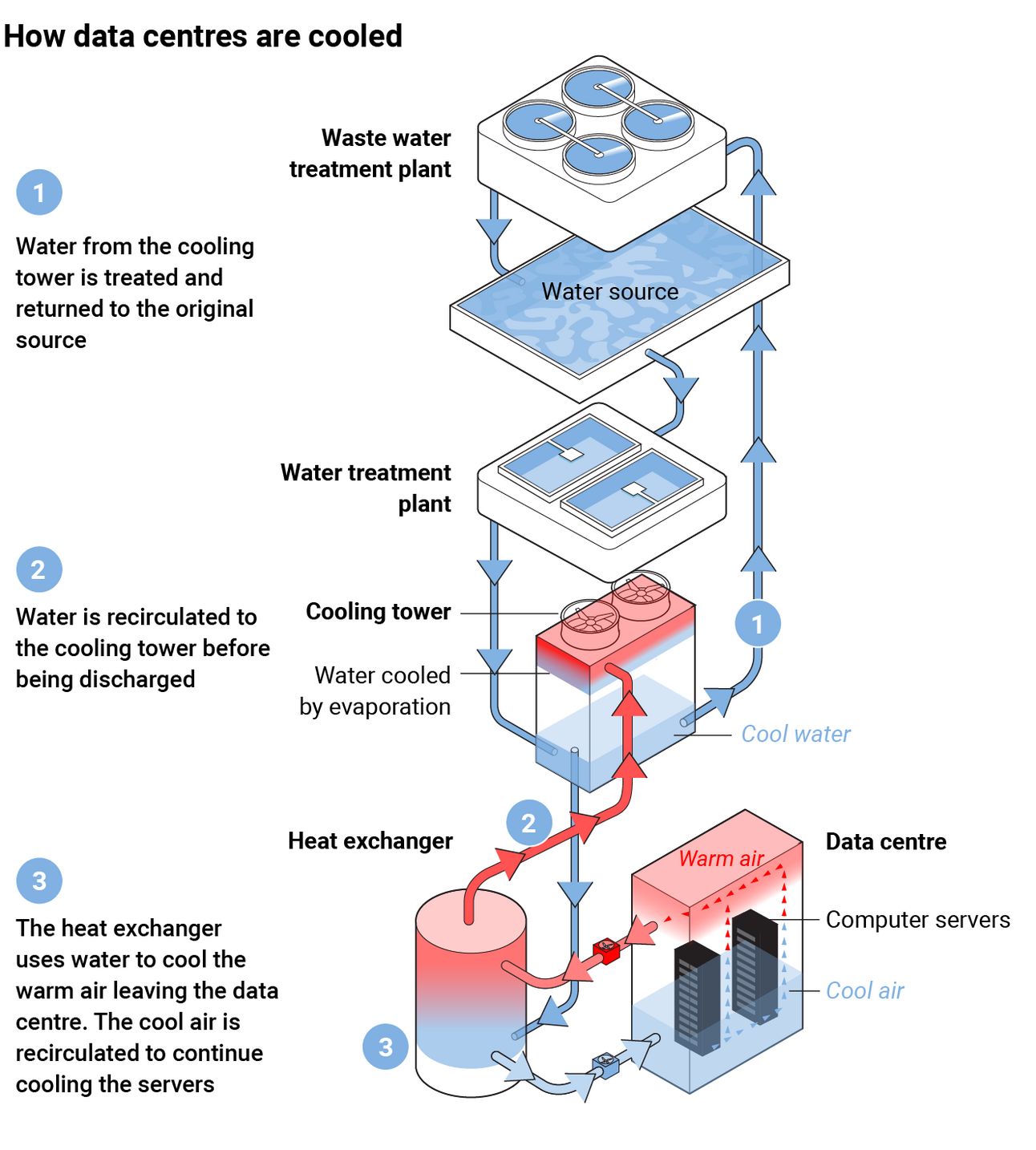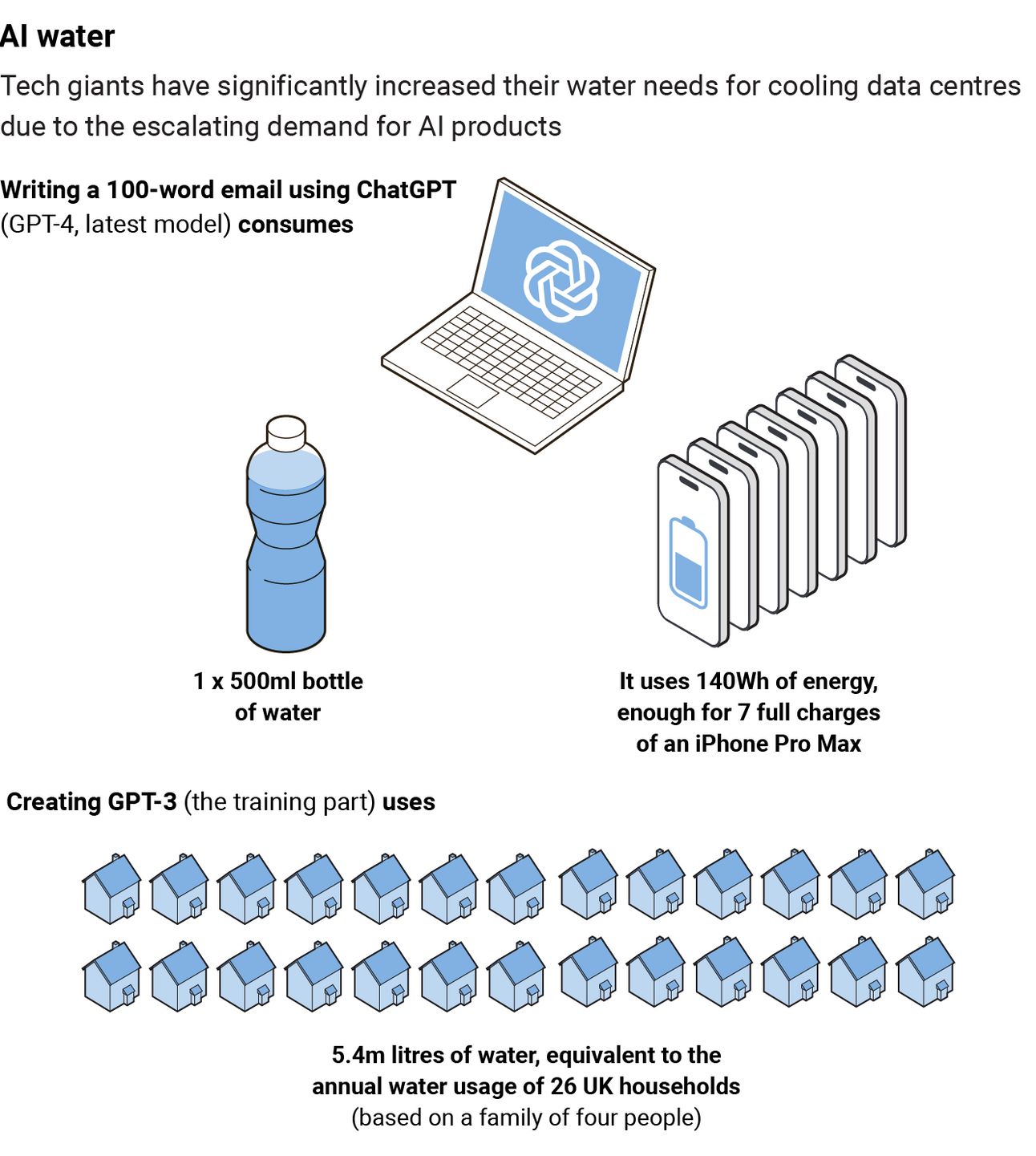- TransAI
- Posts
- The Paradox of AI
The Paradox of AI
Could ChatGPT Be Linked to the Los Angeles Fires?
The recent wildfires in Los Angeles have sparked a debate not just on climate change but also on the environmental impact of modern technology, particularly artificial intelligence (AI) like ChatGPT. This discussion is crucial, as it sheds light on the intersection of technology, infrastructure, policy, and environmental sustainability.
ChatGPT's Water Consumption: A Hidden Catalyst?
ChatGPT, developed by OpenAI, has become a household name for its ability to simulate human conversation, but its environmental footprint, particularly water usage, is less known. Recent findings suggest that ChatGPT consumes significantly more water than previously estimated. According to a study mentioned in The Times, "Thirsty ChatGPT uses four times more water than previously thought," with each query potentially using up to 500 milliliters of water for a series of 5 to 50 prompts. This translates to a massive water footprint, especially considering the billions of queries processed daily.
More detailed research from the University of California, Riverside, and the University of Texas, Arlington, as reported by The Washington Post, indicates that for every 20 to 50 questions answered by ChatGPT, approximately 500 milliliters (or about 16.9 ounces) of water is consumed.

Examples of Water Consumption Based on User Activity:
Single User Activity: If a user asks 30 questions daily, that would mean 500 ml of water per day just from their queries. Over a year, this individual would indirectly contribute to the use of 182.5 liters of water.
Active Users: With over 100 million monthly active users, if each user engages with ChatGPT with 30 questions daily, the daily water consumption could reach up to 50 million liters, or 50,000 cubic meters.
Weekly Email Scenario: A study by The Washington Post further breaks down the impact, noting that sending one 100-word email with ChatGPT uses about 18 ounces (around 532 ml) of water. If one in ten Americans (around 16 million people) used ChatGPT to write an email weekly, this would equate to more than 435 million liters of water annually, roughly what Rhode Island uses in a day and a half.
Infrastructure and Policy Failures: The Real Culprits?
However, attributing the fires solely to AI server water use would be an oversimplification. The infrastructure in Los Angeles, particularly concerning water management and firefighting capabilities, has been criticized for being inadequate. The fires were exacerbated by a combination of factors:
Poor Infrastructure: The water systems in Los Angeles are not designed to handle the simultaneous high demand of residential use, industrial needs, and emergency responses like firefighting. During the fires, some areas experienced water shortages due to this high demand, not specifically because of AI but due to overall infrastructure limitations.
Policy Paralysis: There's been a noted lack of proactive policy-making regarding water conservation and sustainable technology use. Policies have not kept pace with the technological boom or climate change impacts, leading to a scenario where water resources are not managed or conserved efficiently for times of crisis.
Urban Planning and Zoning: The expansion of data centers, often near urban areas, has not been paired with strategies to mitigate their environmental impact. This includes insufficient regulations on water usage or incentives for adopting more sustainable cooling technologies.
Sustainable Solutions for AI's Growing Thirst
The numbers are stark: the global water consumption for AI could lead to withdrawals of 4.2 to 6.6 billion cubic meters by 2027, according to some estimates. To address this, we need:
Innovation in Cooling Technologies: Moving away from water-based cooling systems to air cooling or closed-loop systems using non-drinking water sources could dramatically reduce water usage. For instance, Microsoft aims to be water positive by 2030, reducing water use through innovative cooling methods.
Regulatory Frameworks: Governments must implement stricter regulations on water use in data centers, promoting sustainability through incentives for green technology.
Corporate Responsibility: Tech companies should invest in and report on reducing their water footprint. Microsoft reported a 34% increase in water consumption from 2021 to 2022, largely attributed to AI development, highlighting the urgency for change.
Public Awareness and Action: There needs to be an increase in public awareness about the environmental cost of digital services, encouraging more responsible use and support for sustainable practices.
The Numbers for Better Understanding:
Per Prompt: Approximately 10 ml to 100 ml of water per single prompt, with an average of 500 ml for 20-50 prompts.
Daily Consumption: For 100 million users asking 30 questions, about 50,000,000 liters daily.
Yearly Impact: If one in ten Americans uses it once weekly for an email, it's 435,235,476 liters per year.
Global Scale: With AI's growth, water usage could be between 4.2 to 6.6 billion cubic meters by 2027.

While ChatGPT's servers might have played a role by adding to the water scarcity in Los Angeles, the primary culprits remain the city's unprepared infrastructure and a lack of forward-thinking policies. The fires serve as a wake-up call for integrating sustainability into our technological advancements.
The numbers tell us that without immediate action towards more sustainable practices in AI, we risk not only our environment but also our ability to respond to natural disasters effectively. It's time for a holistic approach where technology, policy, and infrastructure work in synergy for a sustainable future.